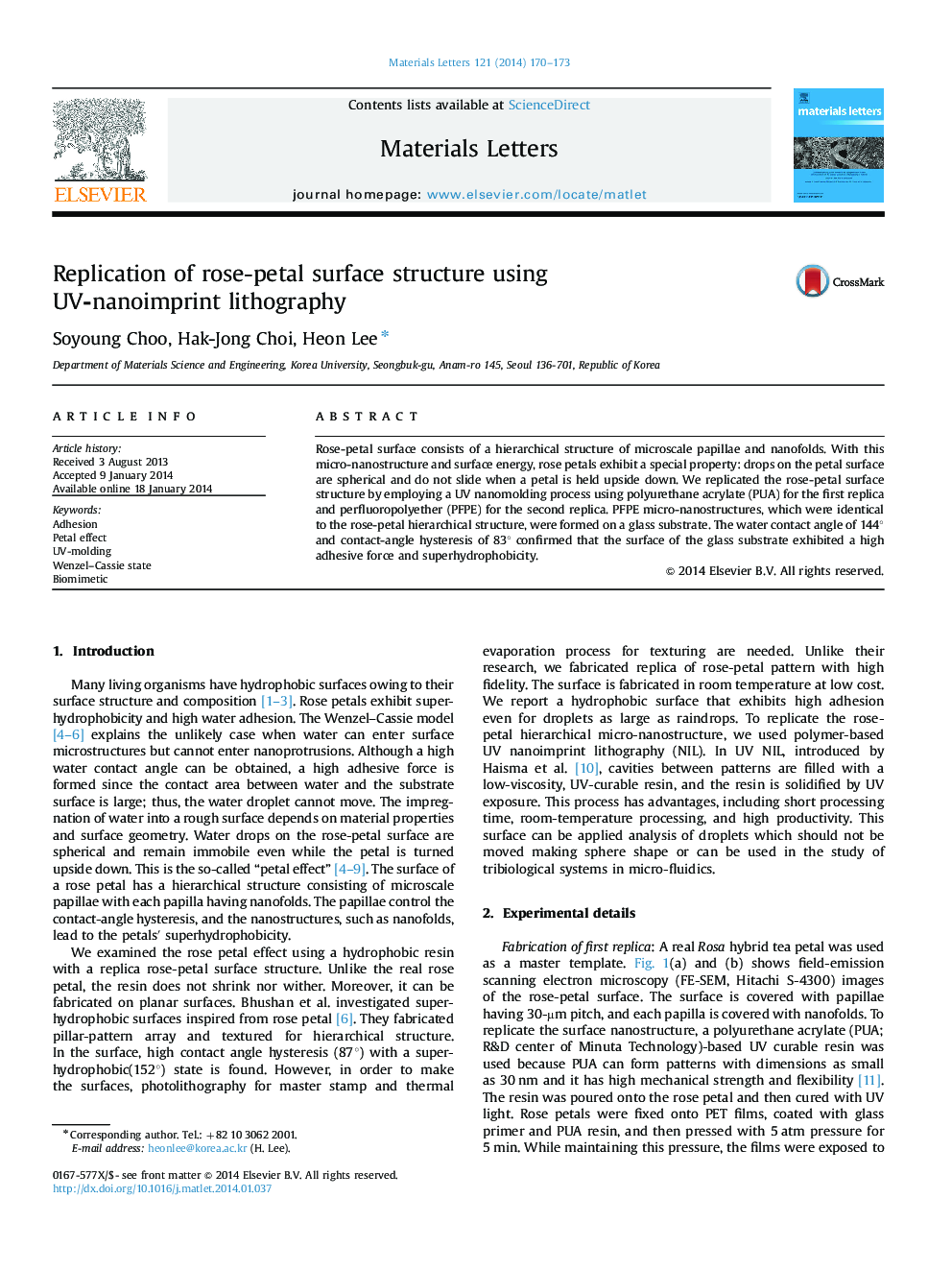| Article ID | Journal | Published Year | Pages | File Type |
|---|---|---|---|---|
| 1644171 | Materials Letters | 2014 | 4 Pages |
•Petal effect means superhydrophobic and highly adhesive surfaces.•We have replicated the rose petal pattern using nano-imprint lithography process.•We have analyzed the hierarchical structure of rose petal indirectly.•Petal effect could be explained Wenzel–Cassie regime.•We made superhydrophobic and highly adhesive surface on the glass substrate.
Rose-petal surface consists of a hierarchical structure of microscale papillae and nanofolds. With this micro-nanostructure and surface energy, rose petals exhibit a special property: drops on the petal surface are spherical and do not slide when a petal is held upside down. We replicated the rose-petal surface structure by employing a UV nanomolding process using polyurethane acrylate (PUA) for the first replica and perfluoropolyether (PFPE) for the second replica. PFPE micro-nanostructures, which were identical to the rose-petal hierarchical structure, were formed on a glass substrate. The water contact angle of 144° and contact-angle hysteresis of 83° confirmed that the surface of the glass substrate exhibited a high adhesive force and superhydrophobicity.
